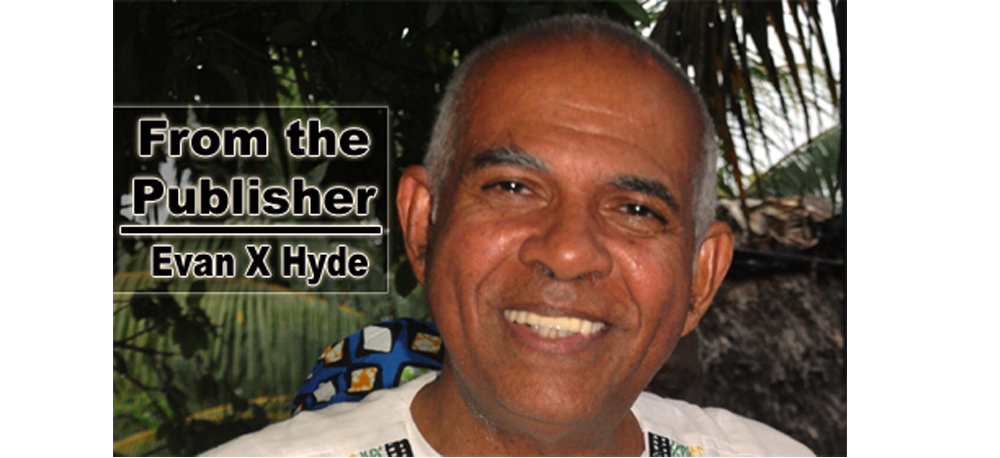Leslie Rogers and I have been very good friends for decades and decades, but his father, the late C. L. B. Rogers, Deputy Prime Minister of Belize and area representative for the Mesopotamia constituency from 1961 to 1979, was Rt. Hon. George Price’s muscle for two decades, as Minister of Home Affairs.
In the streets of Belize City, C. L. B. Rogers was a legend, because of the fact that he was a rare combination of brains and brawn, besides possessing nerves of steel. Mr. Rogers was special. Mr. Price recognized this, and gave him all the space and authority he needed.
As president of UBAD, I was an antagonist, so to speak, of Mr. Rogers from 1969 to 1974 (UBAD’s lifetime), because there were occasions on which UBAD was considered disrespectful to Mr. Price’s and Mr. Rogers’ government.
Anyway, Mr. Rogers’ story is relevant to Cordel Hyde’s story in a way one may consider interesting. Firstly, Mr. Rogers had originally moved over from the NIP to the PUP in 1959 or 1960, in time to run for the Mesop seat in 1961 in Belize’s first general election under a Ministerial constitution.
It is practically impossible to find records of Belize City Council elections from that era, but my personal feeling is that Mr. Rogers was elected as a City Councillor in 1958 on an NIP ticket, an election which the ruling PUP won by a 5-4 margin in seats.
I believe Mr. Rogers actually topped the polls over Mr. Price in a 1961 City Council election, which the PUP won in a landslide.
Anyway, when the first Ministerial government was formed in 1961, the PUP had won all 18 seats in the legislature. The PUP’s Southside strong man was Hon. Albert Cattouse, who had narrowly won the Collet seat over the NIP’s Edward Flowers. In those days there were three Northside seats—Freetown (Mr. Price); Pickstock (Madame Liz); and Fort George (Alexander Hunter). The three Southside seats were Collet, Mesopotamia, and Albert. The NIP’s Philip Goldson won the Albert seat in 1965 for the first time, and then onwards until 1993.
At what point Mr. Rogers replaced Mr. Cattouse as Mr. Price’s main man on the Southside, it is impossible for me to say, but I would guess maybe in 1966 or 1967.
In the 1974 general election, the PUP’s Harry Courtenay won by a single vote in Collet over the new UDP’s Ken Tillett.
Sometime between 1977 and 1978, Mr. Rogers fell ill. The details were never made public. I was running the city streets a lot with Ray Lightburn, Mr. Rogers’ right-hand man, but Ray was a very secretive man. It is possible that Mr. Rogers was flown to Jamaica for specialist treatment, but, as I said, everything was hush hush.
Now when the very critical 1979 general election came around, the PUP knew that Mr. Courtenay needed shoring up in Collet. My sense is that two hundred or so PUP voters were transferred from Mesop to Collet. The statistics of the 1979 election show that Courtenay then defeated Tillett by 224 votes in Collet, while Mr. Rogers lost his Mesop seat by 90 votes to the UDP’s Curl Thompson. This was a seat where Mr. Rogers had defeated Mr. Thompson by 124 votes in 1974. The stats are right there: between 1974 and 1979, Mr. Courtenay came up by 225 votes in Collet, while Mr. Rogers went down by 214 votes in Mesop.
Perhaps a deal was made at the highest levels of the PUP, because, despite losing his seat, Mr. Rogers retained his Cabinet seat as Deputy Premier and Minister of Home Affairs after the 1979 election.
In 1984, the Collet constituency was then divided into three — Lake Independence, Queen’s Square, and Collet. I believe a modicum of Cordel Hyde’s Lake Independence support derives from the PUP generation which was apparently transferred from Mesop in 1979. How small a place is Belize, beloved.

